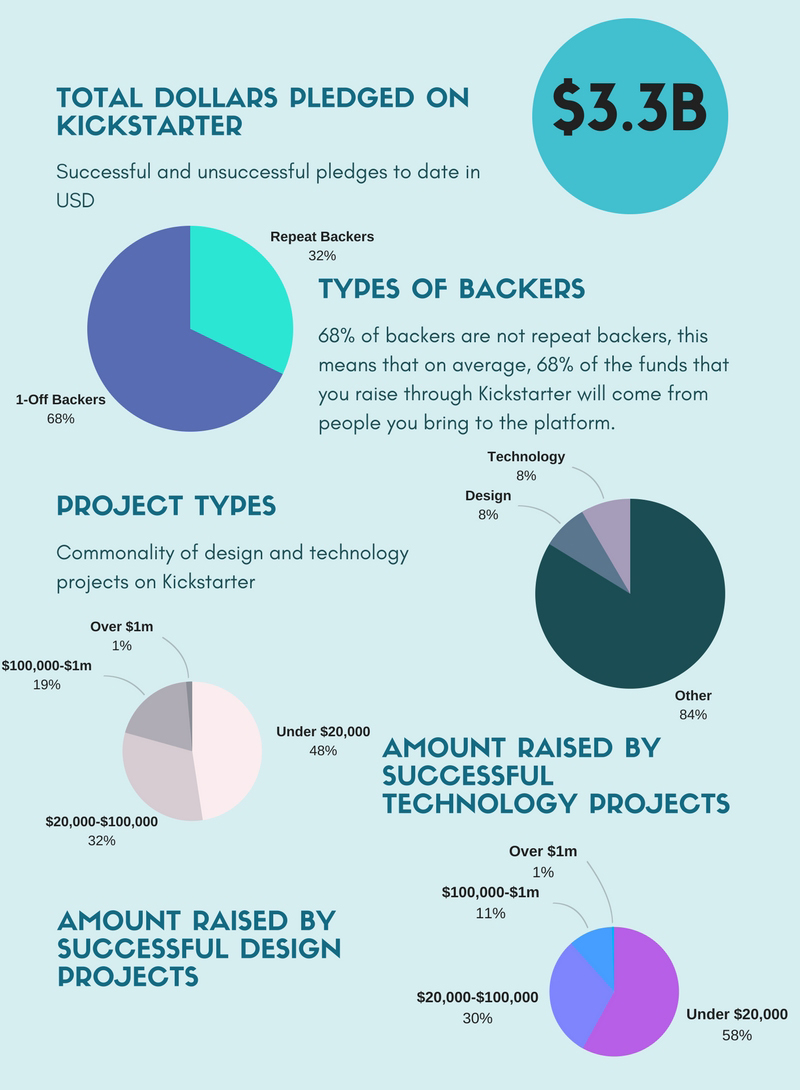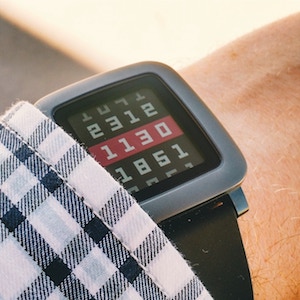Crowdfunding - You get out what you put inProduct DevelopmentCrowdfunding is exciting, and it's not just for small businesses or startups. More and more, platforms like Kickstarter, Pozible and Indiegogo are being used by established brands to test new ideas and build their audiences. They may be entirely capable of funding their project internally, however they see value beyond financial capital in crowdfunding.
We take a look at the stats, and draw on our own experience, to help you discover whether crowdfunding is right for your next project.
The NumbersWhile there are a plethora of crowdfunding platforms now available, we have focussed on Kickstarter in this article. It continues to be the most recognisable platform for hardware projects in Australia. Lets start by looking at the big dollars. We have all heard of the Kickstarter success stories, like Fidget Cube ($6.5M USD) and Pebble (who have now launched several products with $1M USD+ campaigns), but how many products actually have that level of success? In the infographic below we’ve focussed on design and technology, as these reflect the majority of our projects. It is interesting to note that in both categories, only 20% of successful campaigns raise over $20,000.
 Bring Your Own AudienceOne of the most appealing aspects of crowdfunding is the perception of a ready made audience. As you can see above however, 68% of backers are 1-time backers. That means that for the average project, over 2/3rds of revenue raised will come from people that you bring to the platform. Without a substantial existing supporter base for your business, a large and well executed marketing campaign with lots of PR is required to succeed.
Setting A TargetKickstarter and Pozible are both all-or-nothing platforms, which means that if you don’t reach your target you get nothing in return for your investment. This leads some companies to set low targets to ensure some success. This decision can be fraught with danger. Let's say you need $100,000 to cover your shortfall in capital to produce tools and run a first batch of products, but you target and achieve $50,000. Where do you find the other $50,000 you need to fulfil all the orders that you now have as Kickstarter pledges? Make sure that your target gives you the funds you require to progress your business. As well as that, ensure you cover Kickstarter fees and other costs including campaign creation and promotion.
The Cost Of PlayingLets say you need to raise $100,000. What will it actually cost you to raise this? To begin with, there are Kickstarter and money transfer fees, which come to around 10% of the total raised. There is the production of the campaign page itself, which will vary greatly depending on how much you can do yourself. Between copywriting, quality photography and a simple video you would be lucky to get change from $5,000, and could easily double that amount. A great campaign page is nothing however if no-one can see it. Since you will be needing to bring 2/3rds of your audience in from outside Kickstarter, you will need to make sure you have advertising that reaches far and wide to engage your ideal clients. Yvette Adams suggests that you should expect to spend around 10% of what you raise on marketing, and our experience reflects this. Very quickly you can see that over $130,000 in pledges are required to return $100,000.
How It’s Being UsedCrowdfunding platforms launched as a way for grassroots projects to attain the funding that they needed to succeed. They provided an option for projects that may not have been able to achieve financial support through conventional means. Over time this has shifted greatly. As the popularity of platforms grew, large companies started to take note. Businesses as big as GE have taken to crowdfunding to test ideas for smaller market products. Other businesses are using the platform purely for marketing purposes. They launch products with low fundraising targets and strong marketing to generate interest in their brand and products.
When Should You Crowdfund?From our experience, it is always best to crowdfund your product when it is production ready. Your backers want their reward as quickly as possible. You want to know exactly what it is going to cost you to get it to them. Once your design is completed and you have found a manufacturer, you will know what it will cost and how long it will take to get your first products. With this knowledge you will be able to set an accurate target and ensure that you can fulfil pledges.
Why You Should Get On BoardLaunching a product through crowdfunding isn’t for everyone. It takes time, dedication and finances to succeed. It best suits businesses with a strong supporter base, however with the right support that's not necessary. Ideal products are consumer-focused, and stands out from existing products in the market. A well run campaign can offer a great opportunity to build on your brand identity and raise capital through product pre-sales. At Bayly we have great product design and development experience in crowdfunded products.
If you’re looking at developing the next Pebble, Fidget Cube or Airbolt travel lock, talk to us today.
|
Fidget Cube ($6,465,690 raised / 154,926 backers)
Pebble Time ($20,228,986 raised / 78,471 backers) Company bought by Fitbit for $30M in 2017 to kill off the product
The Airbolt Travel Lock ($202,306 raised / 1,633 backers)
|






